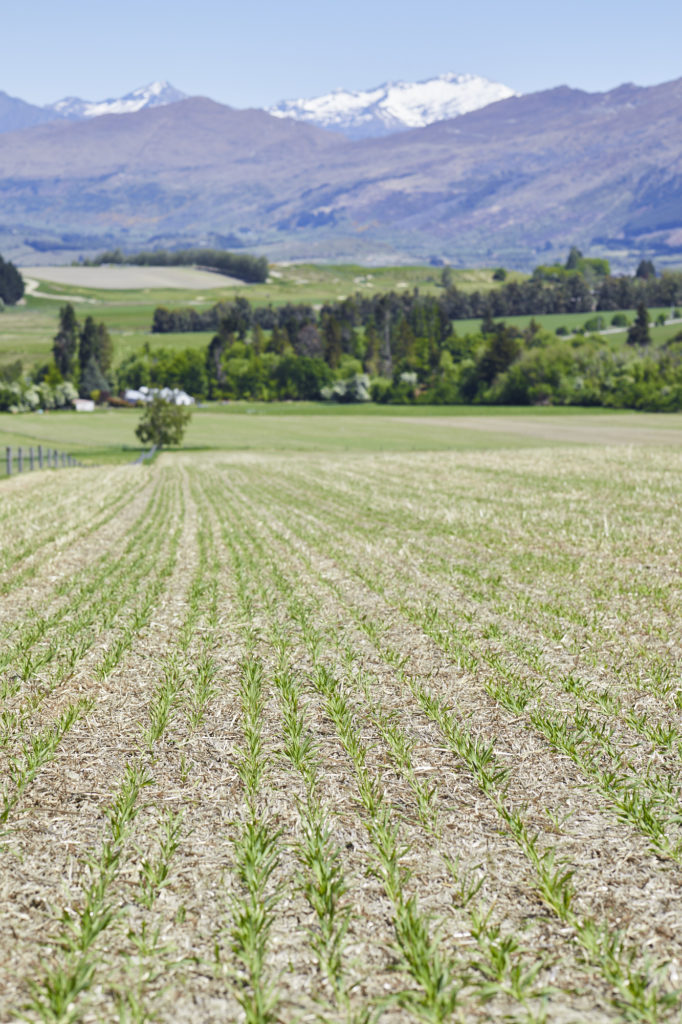Uncategorized
There’s a time and place for nitrogen fertiliser
Last month, Greenpeace presented a petition to Parliament calling for synthetic nitrogen fertiliser to be phased out.
The petitioners claimed synthetic nitrogen pollutes New Zealand’s rivers, threatens our drinking water, and contributes to greenhouse gas emissions because it is widely used in the dairy industry.
Not surprisingly, it is a very emotive topic. But let’s hit pause and properly review this.
While the dairy industry is often painted as a synthetic nitrogen-loving baddie, there is a bit more to it than that.
All living things need nitrogen, a naturally occurring chemical element, to grow. Nitrogen is a component of amino acids, which are the building blocks of protein in all forms of life, whether plants or animals. It can be synthetic or naturally occurring.
All crops, whether they are brassicas grown for winter stock feed or vegetables, soy, maize, wheat, oats, or barley grown for people, have significant nitrogen requirements. Generally, there is not enough naturally occurring nitrogen in the soil to support commercially viable crop yields.
As any home vegetable gardener will tell you, if your plants don’t thrive and produce, there is not much point growing them. That is especially true when you are a horticulturist or arable (crop) farmer who relies on crop yields to pay the mortgage and run the farm.
There are, essentially, four methods of boosting nitrogen levels in a farmer’s toolbox, which can be used depending on the type of farm.
Sheep and beef farmers, for example, predominantly use clover-based pastures to feed their animals. Clover is a legume, a nitrogen-fixer, which usefully returns nitrogen to the soil, so sheep and beef farmers rarely need to top up nitrogen levels in their paddocks.
Dairy farmers, by contrast, need high volumes of grass to keep their cows fed and their milk flowing. Grass, particularly in autumn when growth is slowing, needs a bit of a boost. The extra nitrogen kickstarts the grass growth for the last stretch before herds are dried off for winter.
What is important is that nitrogen usage should be viewed on a sliding scale. Significant overuse of nitrogen can lead to detrimental downstream effects, compared to more efficient application. By contrast, “little and often” nitrogen applications at the lower end of the scale can help deliver good crop yields without ecological destruction.
The focus should be on quality, microbial-rich soil. While working on soil health and resilience through good practices such as crop rotation, reducing tillage and supporting biological activity is the highest priority, it can be beneficial to have a supplemental top-up of nitrogen.
It is the same as looking after your health. While what you eat should be first and foremost, you may sometimes need a top-up supplement.
In the past 20 years, dairy farms have embraced using urea (manufactured nitrogen-rich granules) to keep grass growing throughout the milking season. But they are not the only farmers who rely on it. Nitrogen is crucial for crop farmers, too.

On our farm, we apply it when our crops are at a particular growth stage. Without adding nitrogen to barley (which is used for malting) for example, we would have huge problems with weeds. Strong, healthy barley grows stronger and taller than the weeds, out-competing them, which means that applying a little bit of nitrogen helps us to be spray-free. As the world turns increasingly towards plant-based diets, this kind of trade-off is worth keeping in mind.
The problem with synthetic nitrogen is more to do with how it is applied, and the rate of its application. Traditionally, granular urea is spread over paddocks by trucks or top-dressing. Imagine sifting raw sugar over your lawn, and you get the picture.
However, timing is everything with urea application. If there is a serious amount of rain after it is applied, nitrogen may leach into streams and rivers, with the potential to pollute drinking water and cause algal bloom in waterways.
If there is no rain after urea is applied, there is a risk that nitrogen will be lost to the atmosphere, in the form of nitrous oxide. We absolutely want to get away from either scenario.
In the past year, we have tried two methods of application at Royalburn Station. The first involves mixing nitrogen with humates, which gradually releases it over time. The humates also allow for better uptake by plants, ultimately meaning less nitrogen is required. This system worked well in our arable crops, and should be worthy of consideration.
This season, we trialled a foliar (leaf) application with fish hydrolysate (a liquid fertiliser made from fish guts). This allowed us to materially reduce the requirement for nitrogen (about 80 per cent less than that used in conventionally applied urea), while providing a similar “bounce” in growth across our cereal crops.
As a foliar application, the plants absorb it far more readily, and there is a huge reduction in the risk of run-off or waste.
I will be honest, there was variability in our yields this season, but I put this down to factors outside of nitrogen (existing weed pressure/fungi issues). However, one of these paddocks delivered what I would call a gold-star, 9.5 tonnes-per-hectare crop of barley on dry ground, I suspect that we have at least proven there is some merit in this approach.
Used responsibly, nitrogen isn’t evil. It is a key part of our farming system. Especially as the world becomes increasingly interested in plant-based eating, the requirement for it will be very real.
If we want to safeguard the environment while protecting our ability to grow nutritious food, we need to get smarter about how, when and where we apply it.
It is great to see a huge amount of work being brought to market in the ag-tech space. In the near future, this will give farmers the tools and data points to apply intelligent logic behind nitrogen and all other fertiliser applications.

